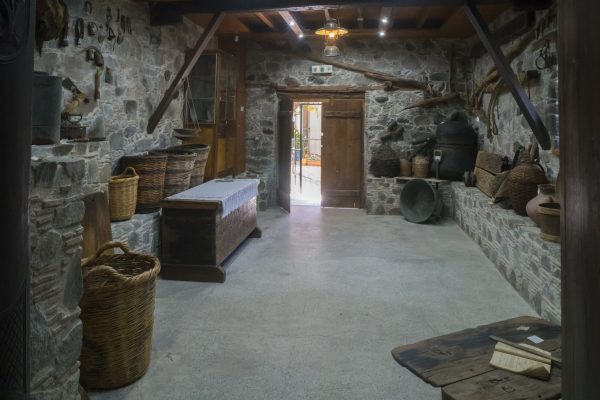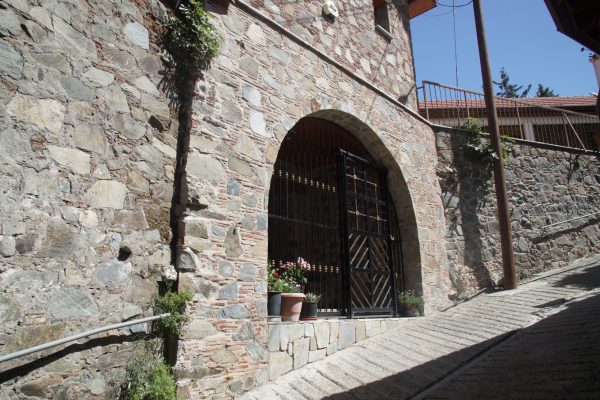Home » Kampi tou Farmaka Village
Kampi tou Farmaka Village
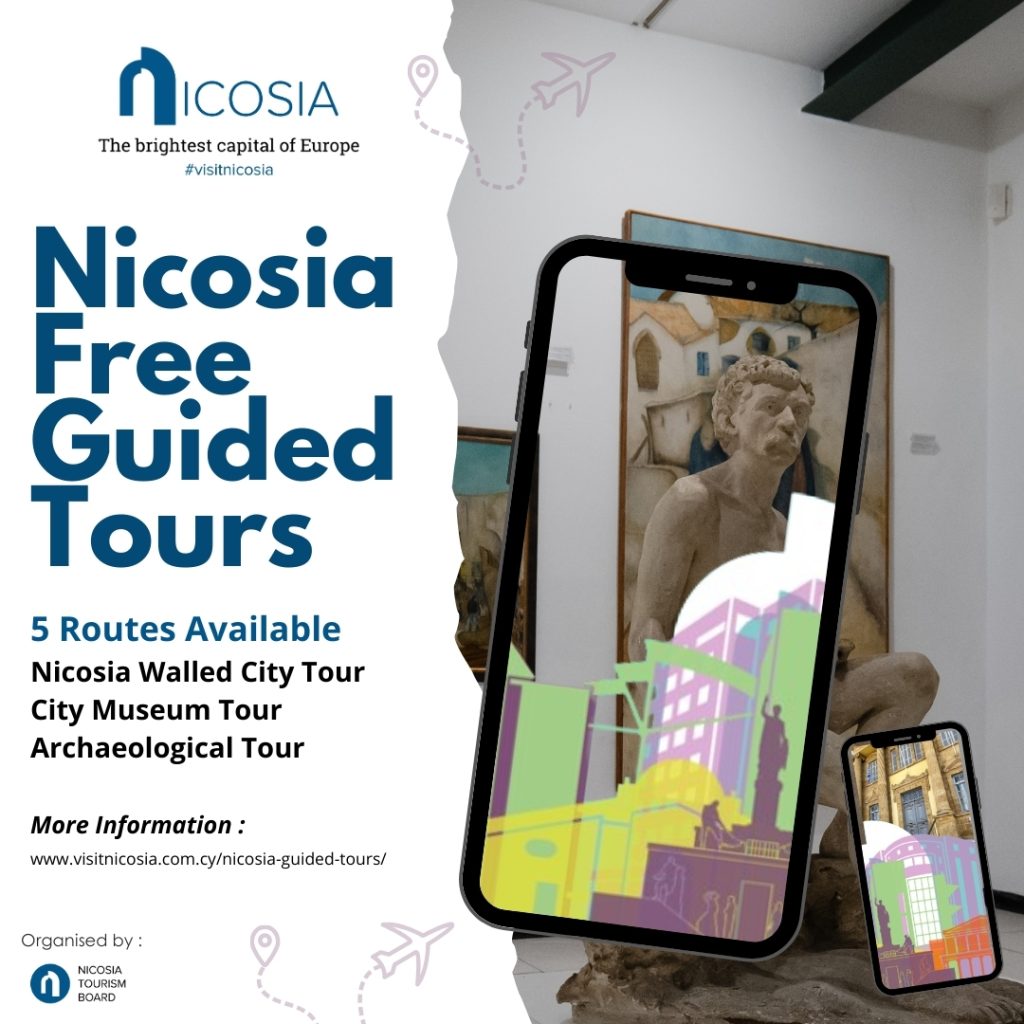
Discover Nicosia’s history and culture with expert-guided tours, revealing hidden gems and landmarks along the way.
Kampi tou Farmaka Village
A Journey Through Time and Nature
Discovering the Legacy and Isolation of Kampi Farmaka
Kampi Farmaka sits at an altitude of 860 meters and is located approximately 55 kilometers from the capital. To reach the village, you can easily drive along the Anthoupolis-Paleochori road, where clear signs will guide you.
Moreover, Kampi Farmaka shares its borders with neighboring villages, including Sykopetra towards the Limassol district, Odou towards the Larnaca district, as well as Farmakas, Apliki, and Palechori.
The village has a rich history, having existed since the Frankish period. In fact, De Mas Latri includes Kampi Farmaka among the Cypriot villages originally granted to the Knights Templar. However, after the dissolution of the Knights Order, the village came under the control of the Knights of St. John. Due to its isolation, modern facilities arrived late; for instance, residents received electricity and telephone communication only in 1970, while the water supply was established in 1974. Today, Kampi Farmaka has a small but vibrant population of 85 inhabitants.
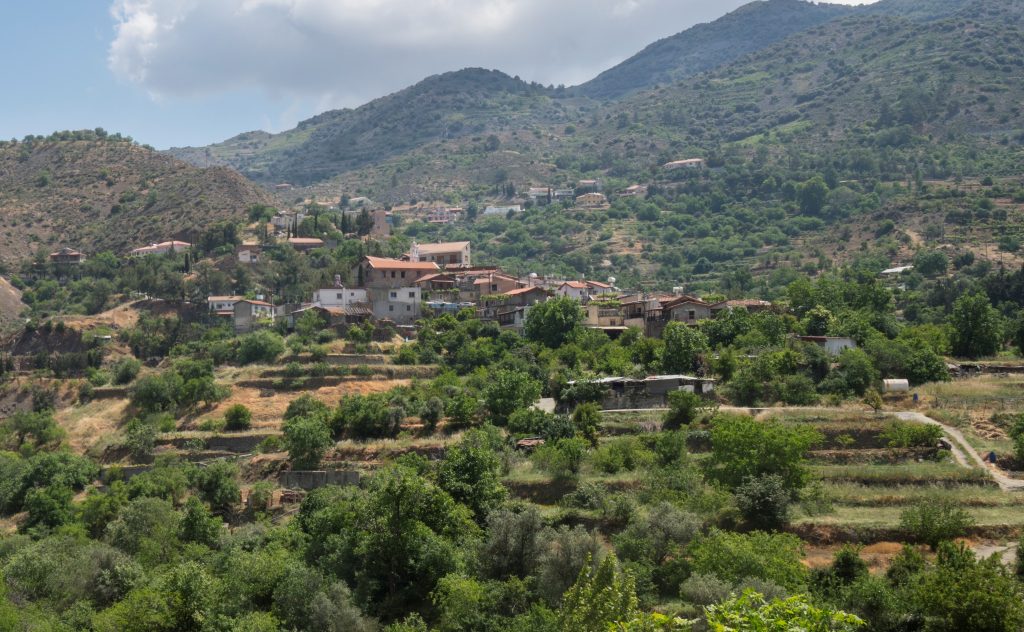
Agios Georgios church
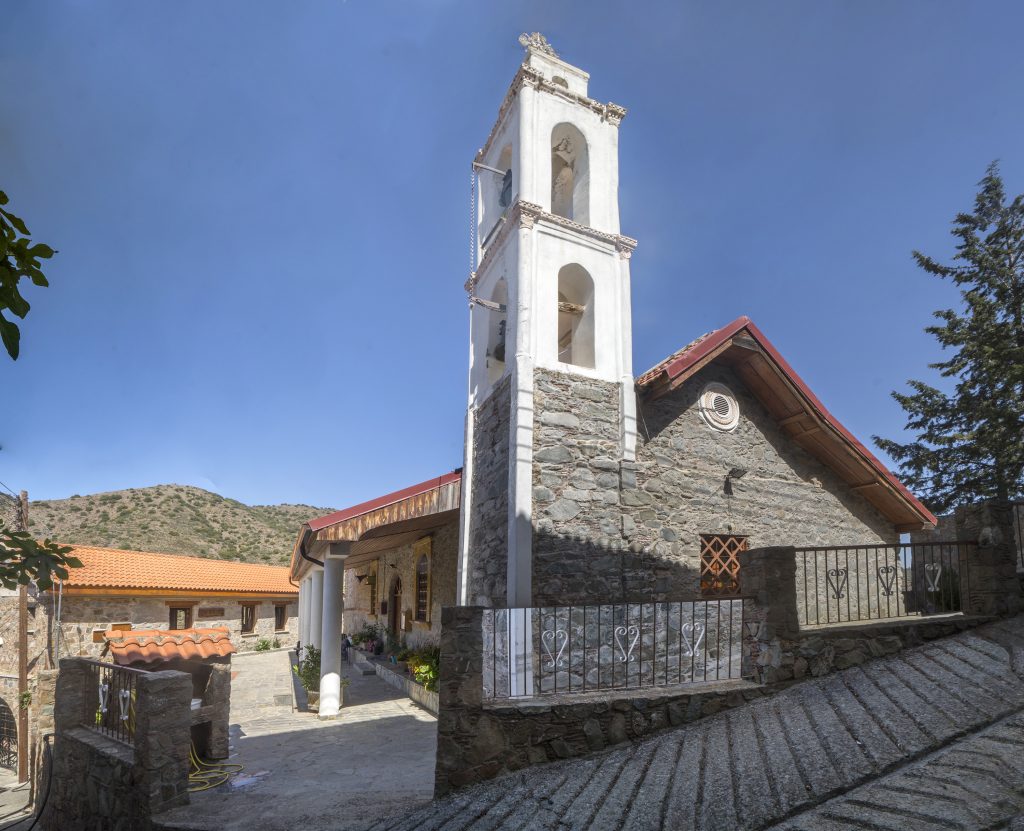
The stone-built church, dedicated to Saint George, celebrates its feast day on April 23rd. Dating back to the 17th century, this church is notable for its exquisite wood carvings.
Additionally, the icon of St. George, which remains preserved to this day, dates from the 15th century. This rare icon illustrates the martyrdom of Saint George, adding to the church’s significance.
Furthermore, one of the most impressive wood carvings in the church is the gynaeconitis. At the bottom, it features a round carved decoration that displays a coat of arms with two lions at its center.
Kampi Farmaka Village: "Kleisidkias" River - "Aidonia" nature trail
“Kleisidkias” River, which passes through Kampi village, is tributary of the Akaki river. The river offers water for irrigation of the village’s orchards.
In addition to the rich flora on the river banks, trouts and crabs are also found in the river. The banks of the river are connected by two stone bridges of the 19th century.
In Kampi, visitors can explore the nature trail “Aidonia,” which stretches for 1,200 meters. This trail gets its name from its location along the river that meanders through the area. Along the path, you will find plane trees, walnuts, and various other trees where hundreds of nightingales nest.
As you walk, you can engage all five senses: admire the vibrant colors, breathe in the delightful aromas of the Cypriot flora, taste the edible fruits, and listen to the cheerful chirping of the nightingales.
Moreover, along the way, visitors can take a break on a bench next to a tree house that children originally built. This tree house has since been renovated and is supported by six trunks from the same plane tree.


Kato Ampelia Bridge - Kamaroto Bridge
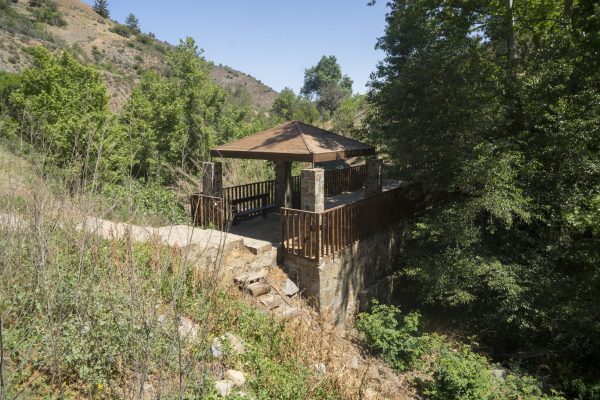

The banks of the “Kleisidkias” river connect through two stone bridges built in the 19th century. On one of these bridges, located in the area of “Kato Ampelia,” stands a large plane tree that hosts a nest for the barn owl (Tyto alba), which helps control the rodent population.
Additionally, the second bridge in Kampi, known as “Kamaroto,” was also constructed during British rule. As is customary, this bridge features an inscription bearing the initials of the king or queen along with the date. The inscription reads “GE” (George E’) and marks the year 1942.
Museum in Kampi Farmaka
Near the church, you will find a small community museum divided into two parts. The first part showcases traditional exhibits, while the second focuses on ecclesiastical items. In the ecclesiastical section, the museum displays vestments, icons, and other sacred objects, including a manuscript gospel dating back to 1624 that occupies the central showcase.
Among the icons on display, one was donated to Kampi by Archbishop Kyprianos of Cyprus in the early 19th century. This donation occurred during a time when swarms of locusts affected crops across Cyprus. The icon depicts Saint Tryphon, the patron saint of farmers and viticulturists, and features an inscription at the bottom.
In addition, the folk art and rural life section of the museum allows visitors to explore agricultural tools and everyday objects. Moreover, metal permits issued by the British authorities to shepherds hang on the wall next to the bronze distillery. These licenses, marked with the letter “S” (for shepherd), were worn by shepherds as armbands to practice their profession.
